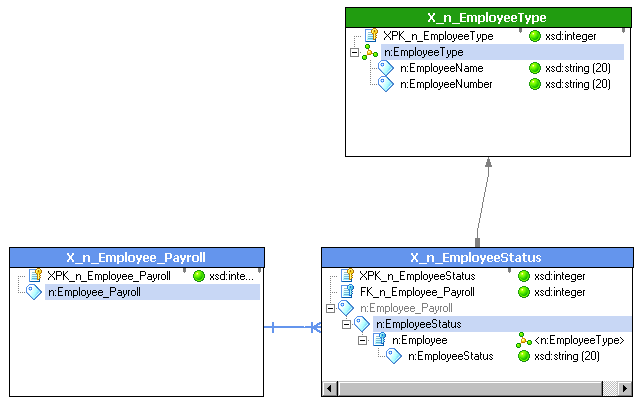PowerCenter
- PowerCenter 10.5
- All Products

<xs:element name="Employee_Payroll"> <xs:complexType> <xs:sequence> <xs:element name="EmployeeStatus" type="EmpStatusType" maxOccurs="unbounded"></xs:element> </xs:sequence> </xs:complexType> </xs:element> <xs:complexType name="EmpStatusType"> <xs:sequence> <xs:element name="Employee" minOccurs="0" maxOccurs="1"> <xs:complexType> <xs:complexContent> <xs:extension base="EmployeeType"> xs:sequence> <xs:element name="EmployeeStatus" type="xs:string"> </xs:element> </xs:sequence> </xs:extension> </xs:complexContent> </xs:complexType> </xs:element> </xs:sequence> </xs:complexType> <xs:complexType name="EmployeeType"> <xs:sequence> <xs:element name="EmployeeName" type="xs:string"></xs:element> <xs:element name="EmployeeNumber" type="xs:string"></xs:element> </xs:sequence> </xs:complexType> </xs:schema>
